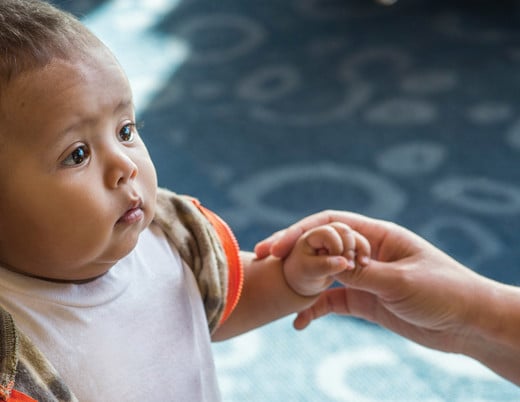Amy Feldman, MD, PhD, has received a grant for $100,000 to pursue research that she hopes will demonstrate that pediatric living donor liver transplant is cost-effective compared to deceased donor liver transplant. The grant, entitled “Living Donor Liver Transplant: Is It a Cost-Effective Option for Children in Need of Transplantation,” was awarded by the North American Society for Pediatric Gastroenterology, Hepatology and Nutrition (NASPGHAN) Foundation, a world leader in research, education, clinical practice and advocacy for pediatric gastroenterology, hepatology and nutrition in health and disease.
“Our goal is to demonstrate that not only is living donor liver transplant associated with lower pre-transplant mortality and improved post-transplant patient and graft survival, but also that it is cost-effective,” says Dr. Feldman. “We hope that this data will convince payors to approve living donor liver transplant for every child in need. Living donor liver transplant has the potential to eliminate pediatric liver transplant waitlist mortality across the United States.”
Dr. Feldman and her research team will use the Pediatric Health Information System (PHIS) dataset to compare hospitalization costs and resource utilization for pediatric liver transplant recipients from 2010 to 2020. Additionally, the team will use 10 years of institutional data to compare the graft costs associated with living versus deceased donor liver transplant. Currently, these data are completely lacking from current literature and will provide valuable insights into the operational and financial implications of transplantation. Dr. Feldman hopes that this additional data will increase access to living donor liver transplants for children across the country.
“If living donor liver transplant was an option for every child, perhaps we could prevent any parent from losing their child on the transplant waiting list.”
- Dr. Amy Feldman
Currently, Dr. Feldman believes there are unacceptable geographic, socio-economic and racial disparities in access to pediatric liver transplant, specifically living donor liver transplant. “Living donor liver transplant is not offered at every center across the country and is not covered by every insurance,” says Dr. Feldman. “The majority of states do not have an active in-state pediatric living donor liver transplant. In fact, Children's Hospital Colorado is one of only a handful of pediatric centers that has surgeons who have expertise in living donor liver transplant, performing more than five pediatric living donor liver transplants per year.”
Dr. Feldman says that Black and Hispanic children are half as likely to undergo living donor liver transplant compared to white children. She hopes this research will be a step toward eliminating disparities and ensuring equal access to living donor liver transplant for every child across the U.S.
As Medical Director of the Pediatric Liver Transplant Program at Children’s Colorado, Dr. Feldman has witnessed first-hand the many benefits of living liver donor transplantation. Working in close collaboration and partnership with the University of Colorado transplant team led by Elizabeth Pomfret, MD, PhD, Children’s Colorado has become a national leader in living donor liver transplant.
Children's Colorado liver transplants by type
Utilizing living donor liver transplant, the transplant team here has been able to bring the waitlist time down to 2 months compared to the national average of 8 months. Additionally, using a living donor allows the team to plan the surgery in advance, picking a time when the recipient is in the best position to receive the transplant instead of having to do it without notice, possibly in the middle of the night, when a deceased donor becomes available.
Dr. Feldman hopes that this grant will add to the growing body of evidence about the importance of living donor liver transplant. Unfortunately, only 15% of pediatric liver transplants currently performed in the U.S. are living donor liver transplants — a number that has remained stagnant over the last decade. As a result, 30 to 40 children across the U.S. die every year because no graft is available.
“If living donor liver transplant was an option for every child, perhaps we could prevent any parent from losing their child on the transplant waiting list,” says Dr. Feldman.
Featured researcher

Amy Feldman, MD, PhD
Medical Director, Liver Transplant Program
Digestive Health Institute
Children's Hospital Colorado
Associate professor
Pediatrics-Gastroenterology, Hepatology and Nutrition
University of Colorado School of Medicine





 720-777-0123
720-777-0123










